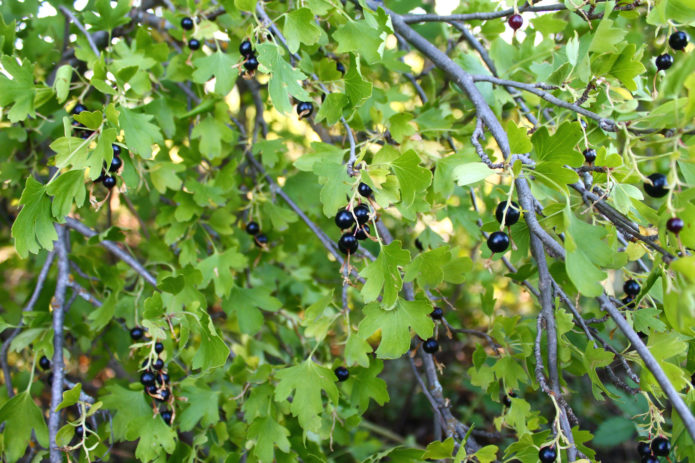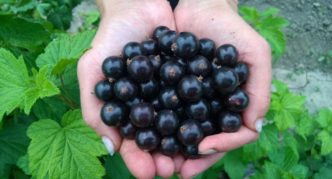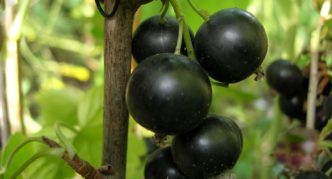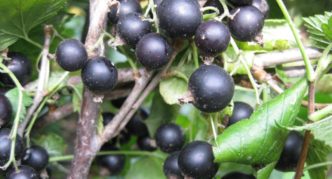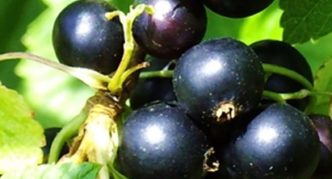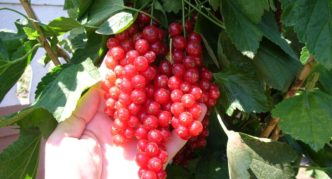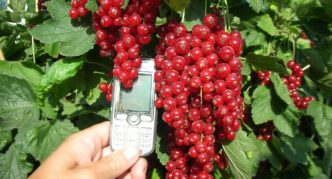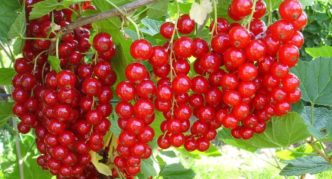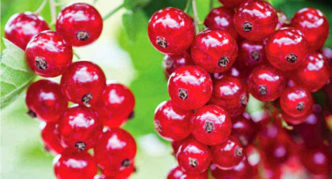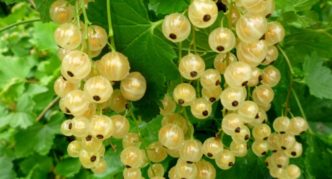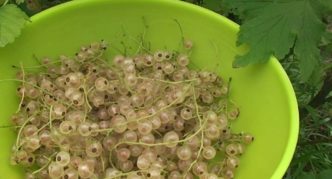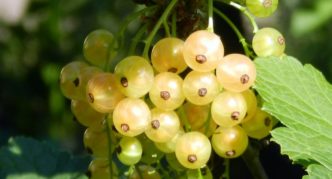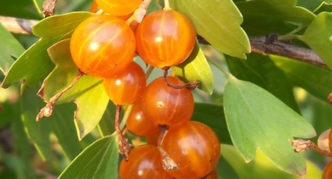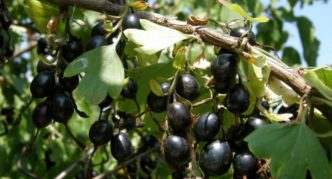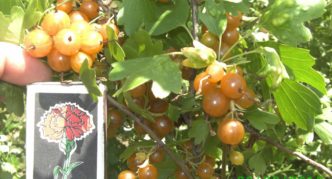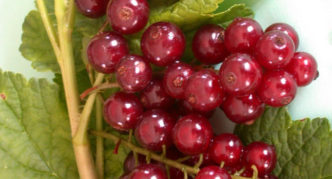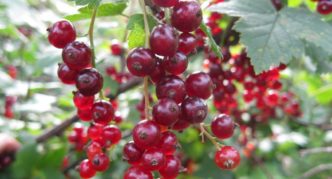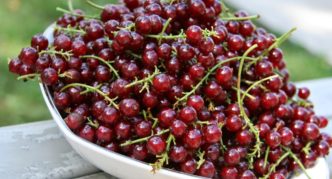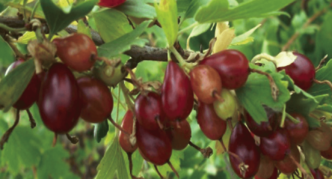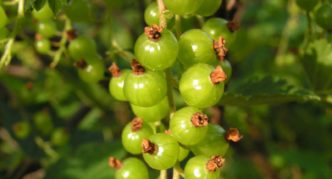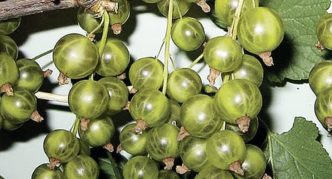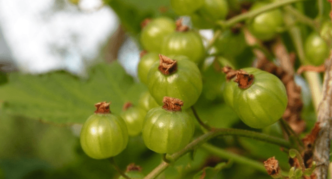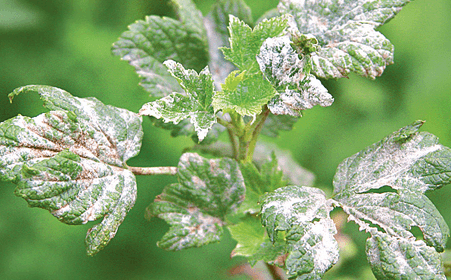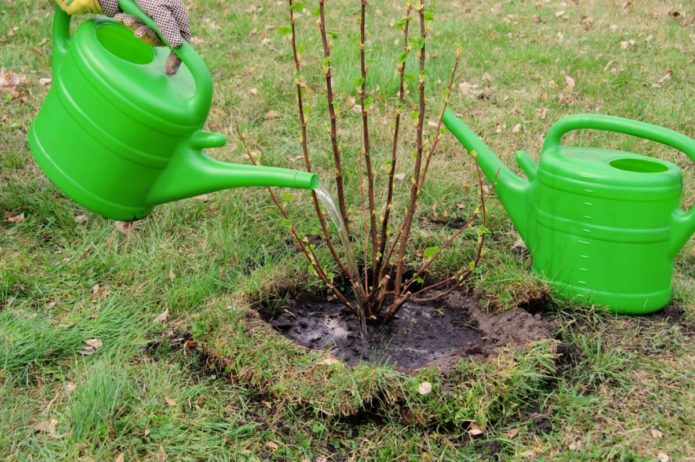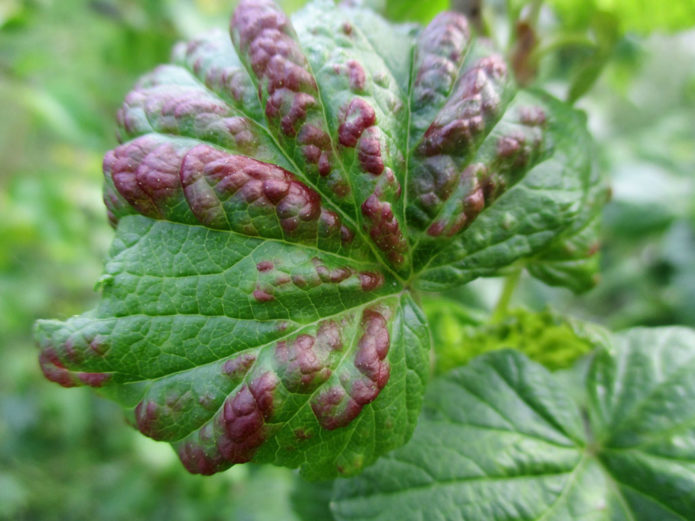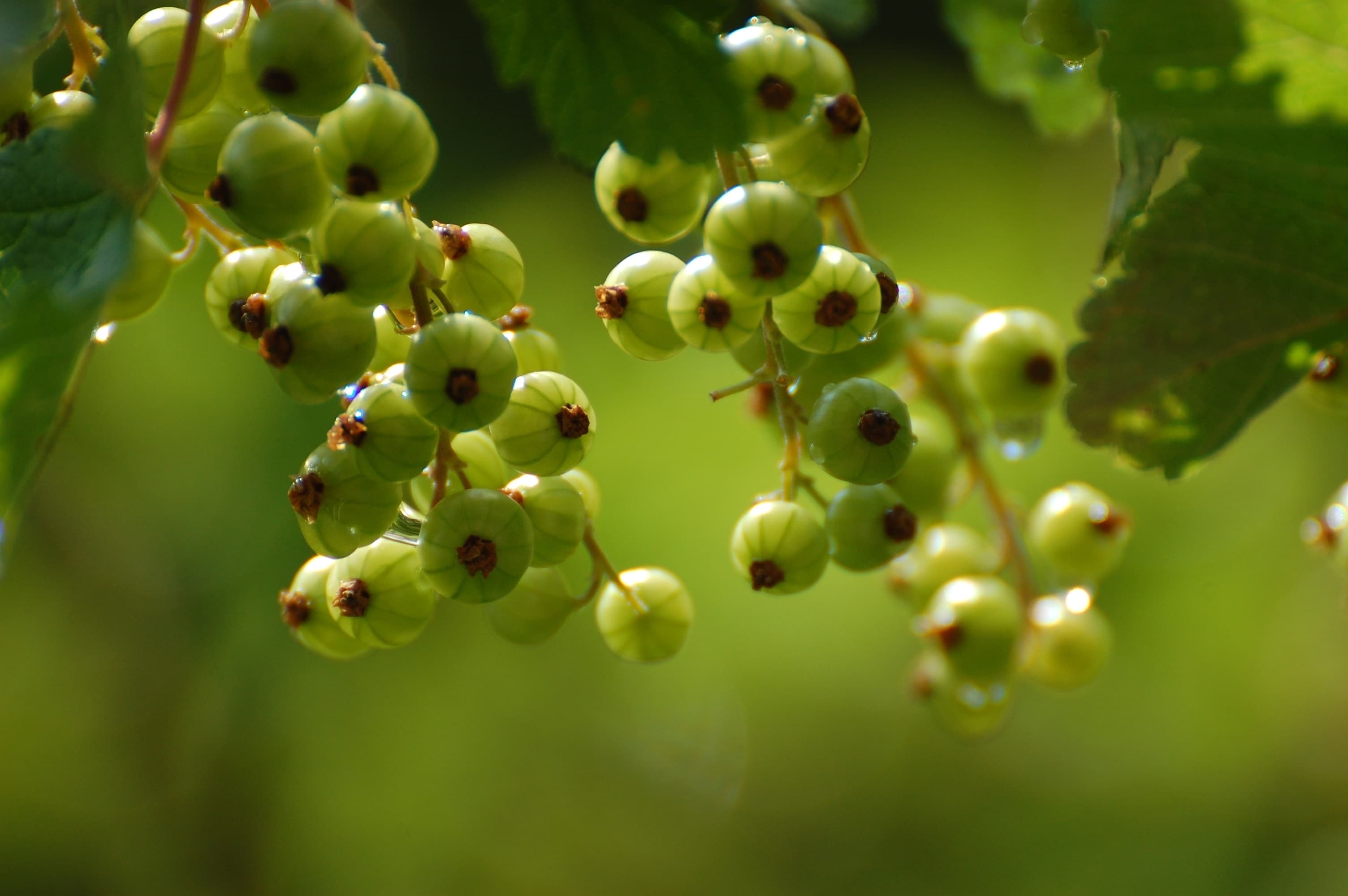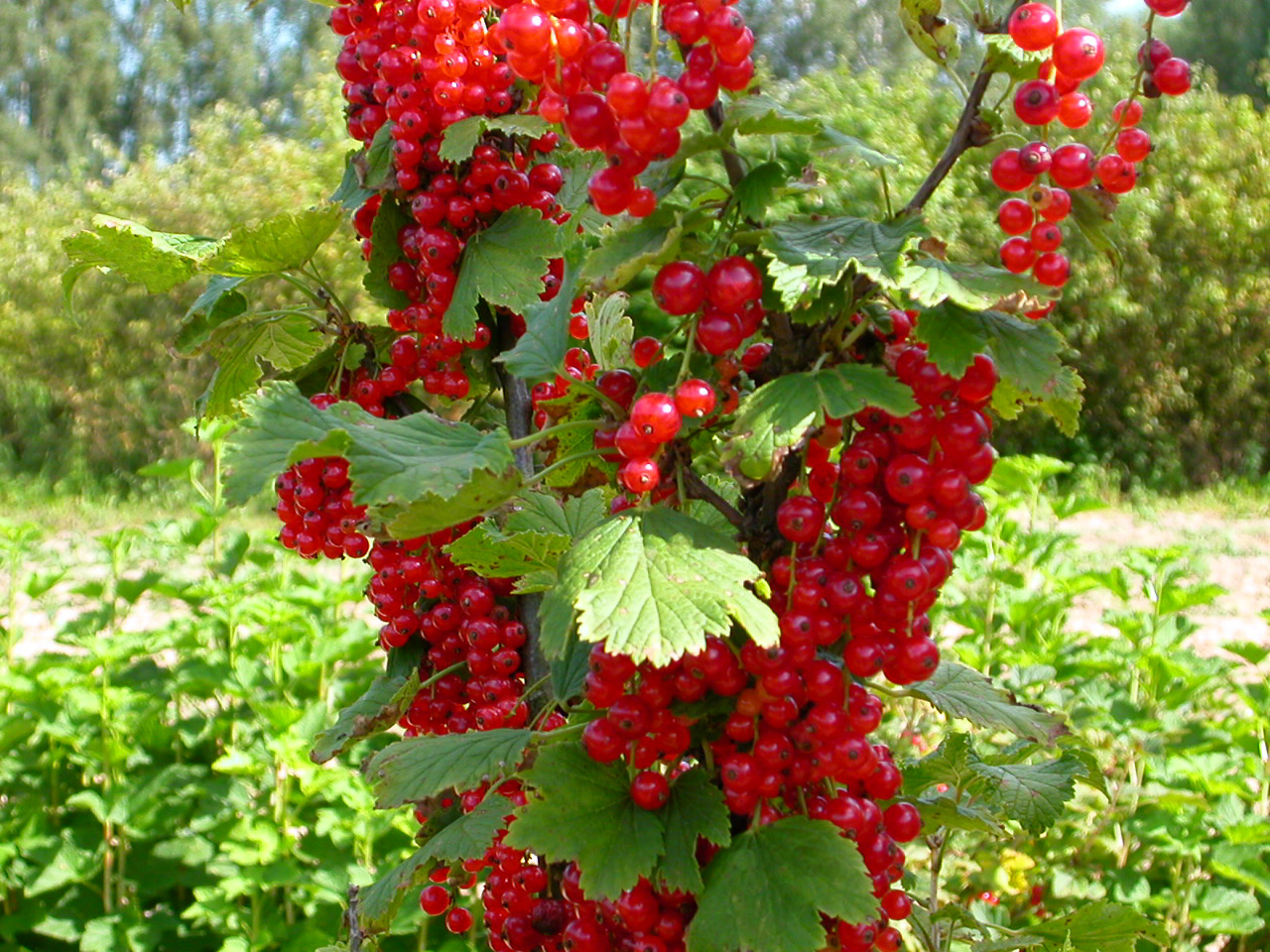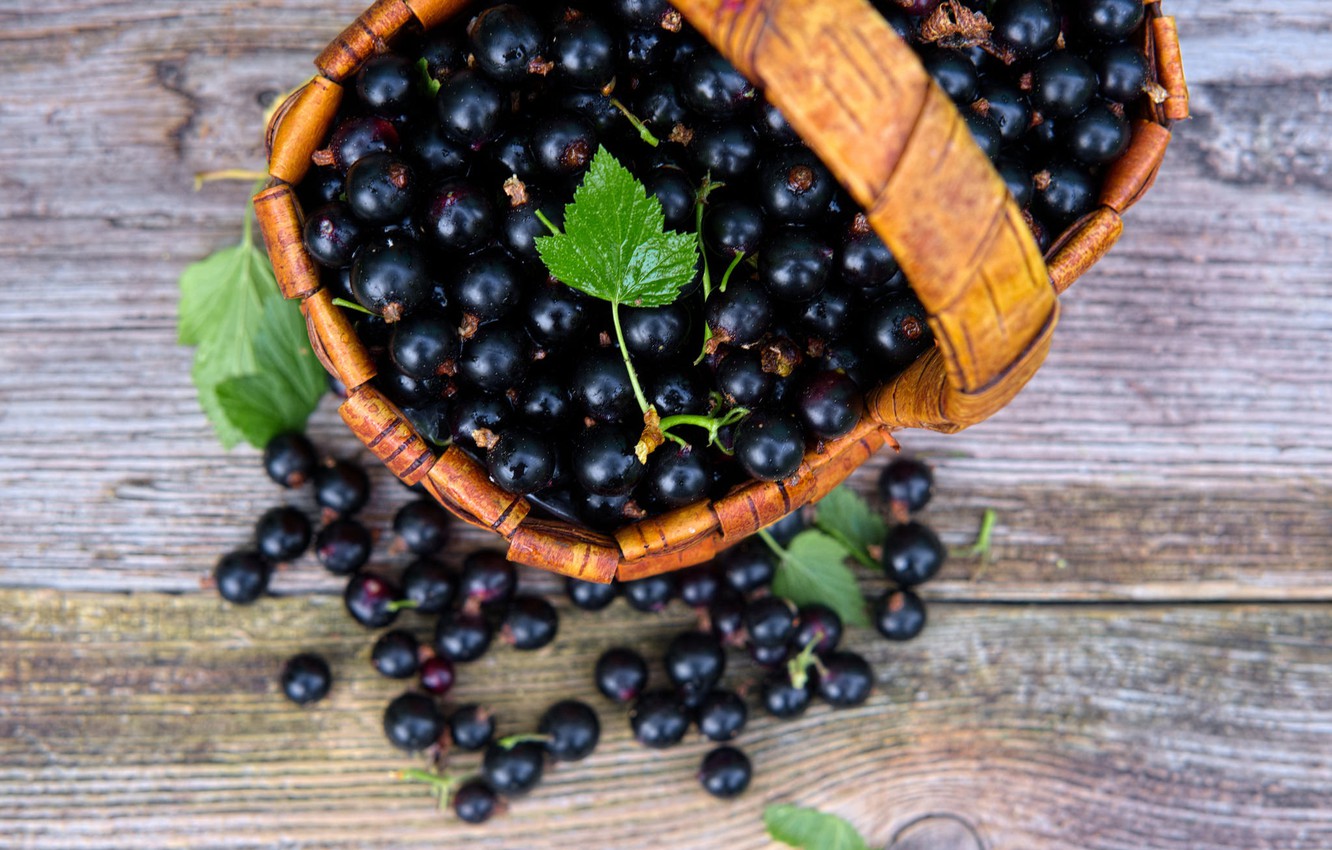In Russia, currants have been grown since time immemorial. Along with gooseberries and raspberries, this berry never goes out of style. It is unpretentious to care for, productive, good both fresh and processed. One of the first currants are planted in plots when laying a new garden. Now there is a large selection of varieties for every color and taste: white, red, green, black, and also yellow, which can also be with red or black berries. How to make sense of this diversity? How to choose the exact variety that will delight you and your loved ones with a tasty and healthy berry for many years? In this article we will try to help you with this.
Content
A little about wild currants
In the wild, red and black currants are found in Siberia and Northern Europe. All varieties we know are bred on the basis of these plants. The most fragrant is currant with black berries, and due to the large amount of essential oils, all parts of the plant have a characteristic odor. Buds, thin pieces of shoots are added to tea, the leaves are used as a spicy addition to marinades, pickles and to flavor drinks. They can be fermented like a tea leaf for a delicious decaf tea.
Criteria for choosing a variety of currants
At present, a large number of varieties of domestic and foreign selection are known that can be grown in various regions. When choosing a variety, various factors are taken into account:
- frost resistance - the ability of a plant to endure low temperatures for a long time is a genetic factor;
- drought resistance - the ability of plants to tolerate a lack of moisture with minimal yield losses. This is one of the important factors when growing in arid regions, where high summer temperatures and occasional rain are common in summer, since currants are a moisture-loving plant;
- the size of the berries is taken into account not least. Previously, plants with berries weighing 1.5-2 g were considered large-fruited. Currently, there are varieties of currants with berries weighing from 4 to 5.5 g (varieties of black currant Lucia (3.6-5.5 g), Treasure (2– 4 g), Exotic (3.5–5 g) Red currant berries are smaller (for example, the Natalie variety weighs 1 g, and the Jonker Van Tets - 1.5 g).
If you treat the choice of seedlings of this culture responsibly, then currant bushes will grow on your site, supply a vitamin berry to your table for more than one year:https://flowers.bigbadmole.com/en/yagody/smorodina/posadka-smorodinyi-vesnoy-sazhentsami.html
You can find advertisements for the sale of remontant currants. Are there such varieties or is it a publicity stunt?
Remontant (from French remontant - to rise again, bloom again) - the ability of plants to bloom and bear fruit repeatedly or repeatedly during one growing season. Reparability can be observed in citrus crops, ornamental shrubs (remontant, hybrid tea and other roses, some types of spirea), berry (some varieties of raspberries, strawberries) and herbaceous plants (ever-flowering begonia, ageratum, lobelia, etc.).
Currently, there are no officially registered varieties of remontant currant.
Varieties of currants
When choosing a plant for planting, gardeners most often choose black or red currants, less often they opt for yellow or white. And few people know about currants with green berries. It is impossible to tell in detail about all the known varieties in one article, we will consider some of them.
Black currant
In the old days, it was called "puddle", because it loves moist soil and does not like the sun, it grows well in a little shade. However, if the humidity is too high, the plant is affected by the fungus. There are now many varieties that are resistant to commondiseases of black currant.
Table: some varieties of black currant
| Variety | Variety characteristic | disadvantages |
| Gulliver | The berries are large, good taste. Resistant to diseases and pests. The yield is high. Frost resistant | Not indicated in the State Register of Breeding Achievements |
| Openwork | The berries are large, sweet and sour. Disease resistance is average. Frost resistant. Yielding | Affected by anthracnose |
| Kipiana | The brushes are dense. The berries are large and have a harmonious taste. Disease and frost resistance high | Affected by anthracnose |
| Lazy person | The yield is high. The berries are large, sweet and sour. Frost resistant. Disease resistance average | Pollinator required |
| Ben Conan | Berries are medium in size, sweet and sour. Winter hardy and high yields | It is slightly affected by diseases and damaged by pests |
| Blaxton | Yielding, frost-resistant. The berries are sweet and sour. Disease resistant | Berries are uneven in size |
| Harmony | The berries are sweet and sour, aromatic. Resistant to disease. Frost resistance and high yield | It is slightly affected by diseases and damaged by pests |
| Dashkovskaya | Resistant to disease. The berries are large, sweet and sour. Average yield, frost-resistant | Not very high yield |
| Centaur | The berries are sweet and sour. Frost resistance and high productivity. Disease resistant | Berries may crumble |
| Mila | The berries are sweet and medium in size. Frost resistant. Resistant to powdery mildew | Not indicated in the State Register of Breeding Achievements |
| Ojebin | Brushes are long. The berries are large, sweet and sour. Resistant to disease. High winter hardiness | Rust resistant |
| Altai late | The berries are medium, sweet and sour. Frost resistant. Disease resistant | Affected by powdery mildew |
| Binar | Frost resistant. The yield is high. The berries are medium in size. Disease resistant | Sour berries |
Photo gallery: popular varieties of black currant
- Blackcurrant variety Ojebin - high-yielding
- Berries of the black currant variety Kipiana are very large
- Black currant variety Openwork can be affected by anthracnose
- Large sweet berries grow on the Gulliver black currant bush
Red currant
This type of currant is distinguished by its unpretentiousness and reliability in fruiting. It grows well and brings good stable yields in the Murmansk and Arkhangelsk regions. Red currant flowers can tolerate a short-term drop in temperature to minus three degrees. The bush does not have a strong characteristic odor.
Table: some varieties of red currant
| Variety | a brief description of | disadvantages |
| Asya | The berries are uneven, sweet and sour. Harvestable. Frost resistant. High resistance to disease | Drought resistance average |
| Jonker Van Tets | Dutch variety. The berries are large and have a pleasant taste. Winter hardiness and resistance to diseases and pests is high | Affected by recurrent frosts |
| Valentinovka | Berries are medium with high gelation. Winter-hardy. Resistant to diseases and pests | Sour berries |
| Pink nutmeg | The berries are pink, sweet with a nutmeg flavor. Harvestable. Resistant to disease. Frost resistant | Not indicated in the State Register of Breeding Achievements |
| Early Tolmacheva | Resistant to disease. The berries are large, sweet and sour. Frost resistance and high yield | Not indicated in the State Register of Breeding Achievements |
| Commemorative | The berries are sweet and sour. Winter hardy. Disease resistant | Small berries |
| Cascade | Productive, disease resistant. The berries are sweet with sourness. Frost resistant | Not indicated in the State Register of Breeding Achievements |
| Beloved | The berries are sweet and sour. Productivity and frost resistance are high. Disease resistant | Weakly affected by anthracnose and kidney mites |
| Generous | The berries are medium, with a pleasant taste. Harvested. Frost resistant. Disease resistant | Affected by a kidney mite |
| Eye of the Dragon | The berries are large, sweet and sour. Productivity and frost resistance are high. Disease resistant | Not indicated in the State Register of Breeding Achievements |
| Iota | Drought-resistant. The berries are sweet and sour. Frost resistant. Disease resistant | Not indicated in the State Register of Breeding Achievements |
One of the most famous varieties of red currant is far from new Early Sweet:https://flowers.bigbadmole.com/en/yagody/smorodina/krasnaya-smorodina-rannyaya-sladkaya-opisanie-sorta.html
Photo gallery: popular varieties of red currant
- Red currant varieties Cascade have sweet and sour berries
- An excellent jelly is obtained from the red currant of the Valentinovka variety
- Jonker Van Tets red currant bred in Holland
- Red currant of the Dragon's eye variety has high frost resistance
White currant
White currant is a type of red. Milk to cream colored berries, sweeter than red or black. Does not cause allergic reactions. Has a delicate aroma. The yield is high. The berries stay on the branches for a long time. Dislikes highly moist soils. In sunny areas it bears fruit better, and in the shade the berries grow more acidic.
Table: some varieties of white currant
| Variety | a brief description of | disadvantages |
| Versailles white | An old (from the 19th century) French variety. The berries are large and sweet. Do not crumble. Harvestable. Average winter hardiness | Affected by fungal diseases |
| White fairy | The berries are uniform, white with stripes, excellent taste. Harvestable. Frost resistant. Disease resistant | Small berries |
| White Squirrel | Harvestable. The berries are uniform and taste good. Frost resistant. Resistant to diseases and pests | Not indicated in the State Register of Breeding Achievements |
| Belyana | The berries are sweet and sour, of medium size. The yield is high. Frost resistant. Disease resistant | Affected by anthracnose |
| Snow White | Frost-resistant, drought-resistant. Berries are sweet and sour, large. Disease resistant | Not indicated in the State Register of Breeding Achievements |
| White Pearl | The berries are sweet, large. Frost resistant. Disease and drought resistant | Not indicated in the State Register of Breeding Achievements |
| Snezhana | Frost resistant. Resistant to disease. Berries are sweet, large | Not indicated in the State Register of Breeding Achievements |
Photo gallery: popular varieties of white currant
- White currant variety White Fairy - frost-resistant
- Versailles white - an old French variety
- The berries of the Snezhana white currant are very sweet
- White currant variety White squirrel resistant to disease
Yellow, or golden, currant
People sometimes call it "crandal", but this is not a general name, but one of the varieties with which IV Michurin worked. The color of the yellow currant berries can be different: the Saffron variety has yellow berries, Purple - purple-brown, Ondine - black. Naturally, golden currants are found in North America. In Europe it has been known since the 18th century, first as a decorative culture.
There is no wide variety of golden currant varieties. This variety is very unpretentious and can grow in any conditions. Golden currants are able to withstand severe frosts, do without watering for a long time. It will delight you with the harvest, even if it grows in the shade, where other varieties of currants practically do not bear fruit.
Table: some varieties of golden currant
| Variety | a brief description of | disadvantages |
| Venus | Good flavor black berries. Shrub up to 1.5 m high. High frost resistance and disease resistance | May freeze slightly (slightly) |
| Laysan | Amber berries, pleasant to the taste. High yield and frost resistance. Resistant to diseases and pests | Small berries |
| Siberian sun | The berries are fragrant, sweet and sour, yellow in color. Frost-resistant, disease-resistant | Requires pollination with other golden currant varieties |
Photo gallery: varieties of golden currant
- Golden currant variety Siberian Sun does not bear fruit without pollinators
- Venus, a golden currant variety, has black berries
- The Laysan variety of golden currant is characterized by a high yield
Burgundy currant
This variety includes currants with pomegranate or cherry-colored berries. It can be either red or gold.
Table: some varieties of burgundy currant
| Variety | a brief description of | disadvantages |
| Viksne | The yield is high. Berries are large, with a balanced taste | May be affected by anthracnose. Low frost resistance |
| Ilyinka | The berries are large, uniform. Resistant to disease. High frost resistance. Resistant to drought and high temperatures | Affected by anthracnose |
| Shafak | A variety of golden currant. The berries are sweet and sour, burgundy. Frost resistance and high productivity. Disease resistant | May freeze in cold winters |
| Hope | The berries are sweet and sour. Resistant to disease. Frost resistant. Productivity is high | Not indicated in the State Register of Breeding Achievements |
Photo gallery: popular varieties of burgundy currants
- Burgundy currant variety Viksne can be affected by anthracnose
- Nadezhda currant berries sweet and sour
- Ilyinka burgundy currant variety resistant to heat and drought
- Shafak currant berries have an unusual teardrop shape
Green currant
Currant with green berries was obtained in Russia in the 30s of the XX century. Such a plant did not arouse interest among breeders and did not have a demand among gardeners. The variety was safely forgotten. However, in Europe, a plant with an unusual color of ripe berries attracted attention. German and Finnish breeders began to work with him. New varieties have appeared. The most famous of the foreign ones is Vertti. In the State Register of Breeding Achievements of the Russian Federation there are registered varieties of Russian breeding - Emerald Necklace, Gold of the Incas, Tear of Isis and others.
Why are currants with green berries attractive? First of all, by its productivity and unpretentiousness. In terms of the composition of vitamins and microelements, it is not inferior to red and black currants, and the taste is sweeter. Ripens late, towards the end of August, when other berries are scarce. It does not have a strong characteristic odor, does not cause allergic reactions. In addition, green currants are practically not affected by fungal diseases and are resistant to pests.
Table: some varieties of green currants
| Variety | a brief description of | disadvantages |
| Emerald necklace | Berries are yellowish-green, good taste, aromatic. Productivity and frost resistance are high. Resistant to diseases and pests | |
| Green haze | Berries sweet and sour taste, aromatic.Productivity and frost resistance are high. Resistant to diseases and pests | |
| Galitsky Burshtyn | The berries are sweet, do not crumble. The yield is high. Frost resistant. Disease resistant |
Photo gallery: popular varieties of green currants
- Berries of the Green Haze variety are very aromatic
- Green currant variety Emerald necklace resistant to diseases and pests
- Berries of the green currant variety Galitsky burshtyn do not crumble
Disease and pest resistant varieties
Cultivated plants are more susceptible to disease than their wild counterparts. The work of breeders is aimed not only at improving the quantity and quality of berries, but also at increasing the resistance of plants to pathogens of various diseases and pests. Fungal diseases such as anthracnose (affects the leaves), powdery mildew (leaves and berries suffer), rust (manifests itself on the leaves) cause great damage to the plantings of currants. On red and white currants, the fungus causes the shoots to dry out. In addition to fungal diseases, plants can be affected by viruses (for example, double leaves).
Pests also do not bypass currants. Gall aphids, fire flies or spider mites do not refuse this plant.
Disease and pest resistant varieties allow you to get large yields without spending a lot of effort on caring for them:
- black currant - Binar, Summer Resident, Titania, Cypriana, Memory of Vavilov, Temptation, Raisin, Mermaid;
- red currant - Serpentine, Natalie, Sugar, Marmalade, Valentinovka, Ilyinka;
- white currant - all varieties except Versailles;
- yellow and green currants - all varieties are very resistant.
Currant varieties for different regions
When choosing a variety for planting, first of all, you should take into account the climatic characteristics of your region. Better to opt for plants that are adapted to the conditions of your area. A large selection of zoned varieties allows you to do this.
Currant cultivation technology, peculiarities of planting and caring for shrubs in different regions:https://flowers.bigbadmole.com/en/yagody/smorodina/uhod-za-smorodinoy-vesnoy-borba-s-vreditelyami.html
Southern regions of Russia
In the Volgograd and Astrakhan regions, winter begins in late November. The coldest month is January (-10 aboutFROM). Lowering the temperature to -25 aboutC and more are frequent, but short-term. Cold days are often followed by thaws. Such fluctuations lead to the formation of an ice crust not only on the surface of the earth, but also on the branches. This causes great harm to the plants. The buds freeze, branches break under the weight of the ice. The snow cover is not kept everywhere and its thickness is insufficient for a good wintering of plants.
Spring is short, at the end of April and in May the temperature can often rise to + 22-25 aboutC. Summers are hot with minimal rainfall. Droughts come here with enviable consistency. Air temperature in the shade + 35-40 aboutC is also a common occurrence.
Autumn rains are not always sufficient. However, despite the climatic difficulties, fruit and berry crops can be successfully grown here. The following varieties of currants have proven themselves well:
- black - Gulliver, Belarusian sweet, Titania, Vologda;
- red - Marmalade, Natalie, Detvan, Beloved;
- white - Viksne, Boulogne, Wonderful, Versailles white;
- yellow and green - all varieties are suitable, since they are drought-resistant.
Middle zone of Russia
The Moscow region, Central Russia and the Black Earth region are characterized by mild winters with good snow cover. Average temperature -8-13 aboutC, frosts at -30 aboutC are not frequent. Summers are moderately humid. Extreme heat is rare and short-lived. Average summer temperature + 22-26 aboutC is most plant-friendly. Autumn is warm and humid. Although it is recommended plant currants in autumn, it is worth considering that a lot of rain at this time of the year can be the cause of fungal diseases. For this region, the most suitable varieties of currants, resistant to diseases, medium frost resistance:
- black - Detskoselskaya, Moscow, Nara, Belorusskaya sweet, Nestor Kozin;
- red - Dear, Yonker Van Tets, Natalie, Rosetta;
- white - Smolyaninovskaya, Bayana, Cream, Diamond (White Fairy), Versailles;
- yellow and green - all varieties are suitable.
North of Russia
In North-West Russia and in the Leningrad Region, snow cover can last up to 200 days a year. Frost on average about -20-25 aboutC, significant depressions are possible, but short-lived. A large amount of snow allows the currants to endure the winter, even with low frost resistance. Return frosts are frequent in spring.
In summer, the temperature is within + 15-20 aboutC. Hot days (up to +30 aboutC) are rare. From April to October, up to 70% of the annual rainfall falls. In such conditions, preference was earlier given to more reliable and unpretentious red currants, since black currants with high humidity were often affected by diseases.
For this region, it is better to give preference to early and mid-season varieties of currants that are resistant to diseases:
- black - Openwork, Venus, Vologda, Leningrad giant, Gulliver, Petersburg woman;
- red - Gift of the summer, Viksne, Rosa, Yuterborg, Roland;
- white - Smolyaninovskaya, Versailles;
- yellow and green - all varieties.
Belarus
Winters in Belarus are mild. The average temperature during this period is -5-10 aboutC. There is snow cover practically throughout the entire territory. Summers are warm, without sudden temperature changes (on average + 17-23 aboutC), with frequent rains. Autumn is damp, but rather warm. Currant is one of the favorite berry crops here; a large number of varieties are grown.
Plants with low frost resistance and high disease resistance thrive in the Belarusian climate. Late-ripening varieties ripen well. Therefore, we can safely recommend the following varieties of currants:
- black - Belarusian sweet, Heiress, Opening day, Golubichka, Sorceress, Katyusha;
- red - Yonker Wat Tets, Rosetta, Natalie, Detvan, Beloved;
- white - Belyana, Holland pink, Jumping, Krynichka;
- yellow and green - all varieties.
Ural
The Ural region stretches from north to south. Because of this, in summer, the temperature difference is very significant: from + 6-8 aboutFrom up to + 22-24 aboutC respectively. In winter, this difference is not so significant. Return frosts in spring are common, especially in the northern regions of the region. The varieties are selected taking into account these features:
- for the north of the Urals, frost-resistant, disease-resistant, early-maturing varieties are suitable;
- in the southern part of the region, mid- and late-ripening varieties ripen.
It is better to select plants with different flowering periods, so the probability of damage to all plantings by recurrent frosts will be less. The most suitable varieties of currants will be:
- black - Dashkovskaya, Sibylla, Nina, Gift to Kuzior, Atlas, Venus;
- red - Ural beauty, Dutch pink, Beloved;
- white - Ural white, Versailles, Belyana, Primus;
- yellow and green - all varieties.
Siberia
In Siberia, winters are frosty and snowy. There are no large temperature jumps. The duration of winter here is 5–7 months. Summer is not very hot, there is plenty of precipitation. Plants that are unpretentious and frost-resistant are better suited for this region. Early and mid-ripening varieties will be more suitable, although in the south of the region, late currants have enough time to ripen. The following varieties are suitable:
- black currant - Hercules, Lucia, Riddle, Altai late;
- red currant - Generous, Beloved, Sarah, Rosetta;
- white currant - Minusinskaya white, White Potapenko;
- yellow and green - all varieties.
Ukraine
In Ukraine, the coldest month is January (-10 aboutC), in the southern regions in winter, temperatures above zero can be kept. Summer is warm from +22 aboutFrom to +25 aboutS. Precipitation falls more in mountainous regions (Carpathians), but there are enough of them in the rest of the territory.Fertile soils, mild climate, frequent rains are favorable for growing a large number of varieties:
- black currant - Sofievskaya, Zhemchuzhina, Yubileynaya Digging, Krasa Lvova, Yadrenaya;
- red - Darnitsa, Enchantress, Valentinovka, Ural beauty;
- white - Belyana, Dutch white, Versailles, Ural white;
- yellow and green - all varieties.
Reviews
This year I really liked the currant Orlov waltz. Large and sweet. She is my second year, the first time bearing fruit. I love the Leningrad giant and the Belarusian sweet. It is a pity that I lost these varieties.
I would like to recommend one more variety of black currant - Lazy. My bush is three years old, the "variety testing" has passed in full measure this year, in the past the berries were smaller and very few in number. Late, with sweet large berries, I took off the harvest today and was pleasantly surprised by the taste. I recommend it to all lovers of black currant in central Russia.
Advantages: unusual color of berries, useful berry, sweet, fruit well. White currants are actually a variety of red currants, so they are just as useful as they are chemically similar. For me personally, white currants are the most delicious if you choose from red, black and white. It does not sour, so when fresh, you can eat it without fear of getting sore on your teeth. A sweet and delicate berry, resistant to weather changes, and also bearing fruit until the fall!
I have been growing golden currants for several years. Resistant to frost, drought and disease. My wife really likes the berry to her taste, that's why I planted it. The bush is a little tall and you have to tie it around so that the branches do not tilt. A prerequisite - you need to plant only varietal golden currants, and not wild-growing - the difference in the taste and size of the berries is significant.
The history of growing currants goes back more than one hundred years. A wide variety of varieties with different ripening periods, taste and color of berries, frost resistance and disease resistance allows you to choose a plant for every taste and for any region. For your care, the currant will generously present you with a tasty and healthy berry.
